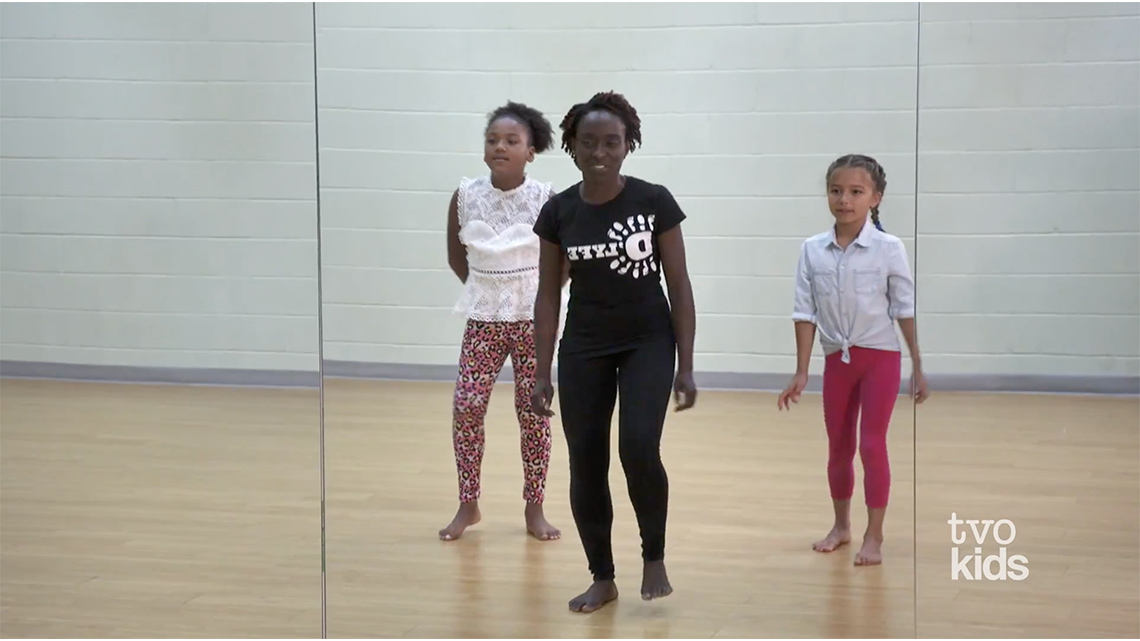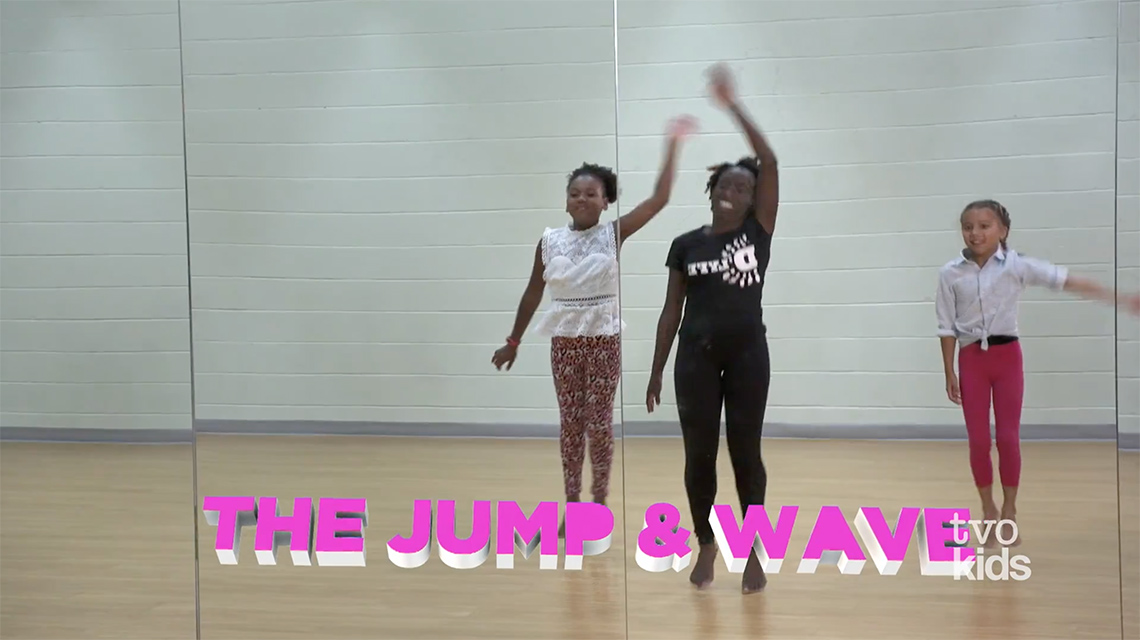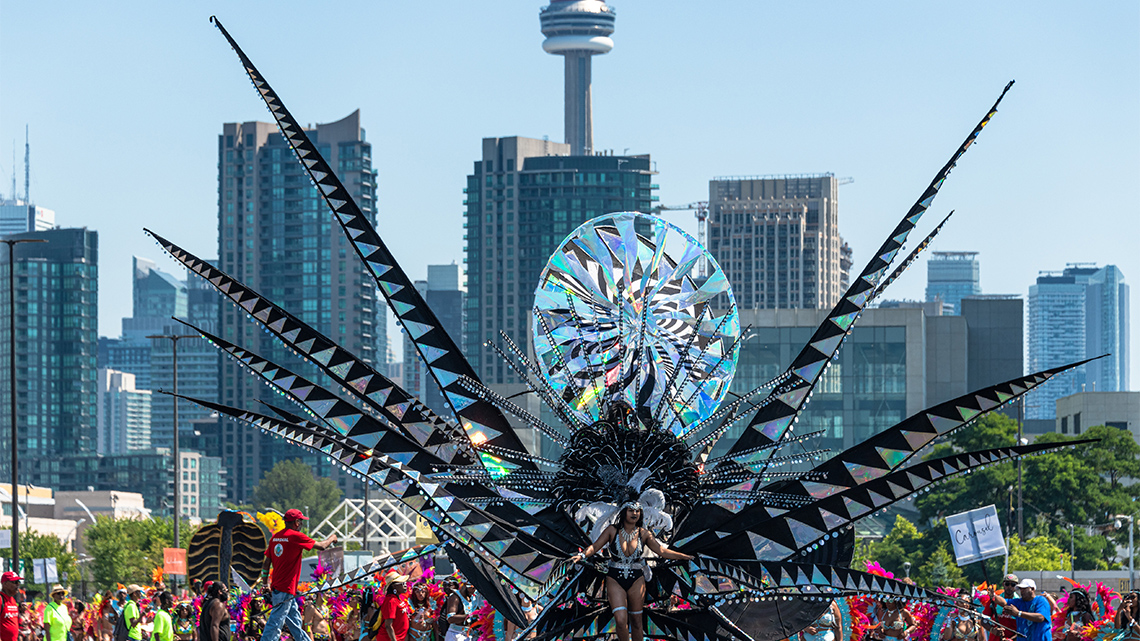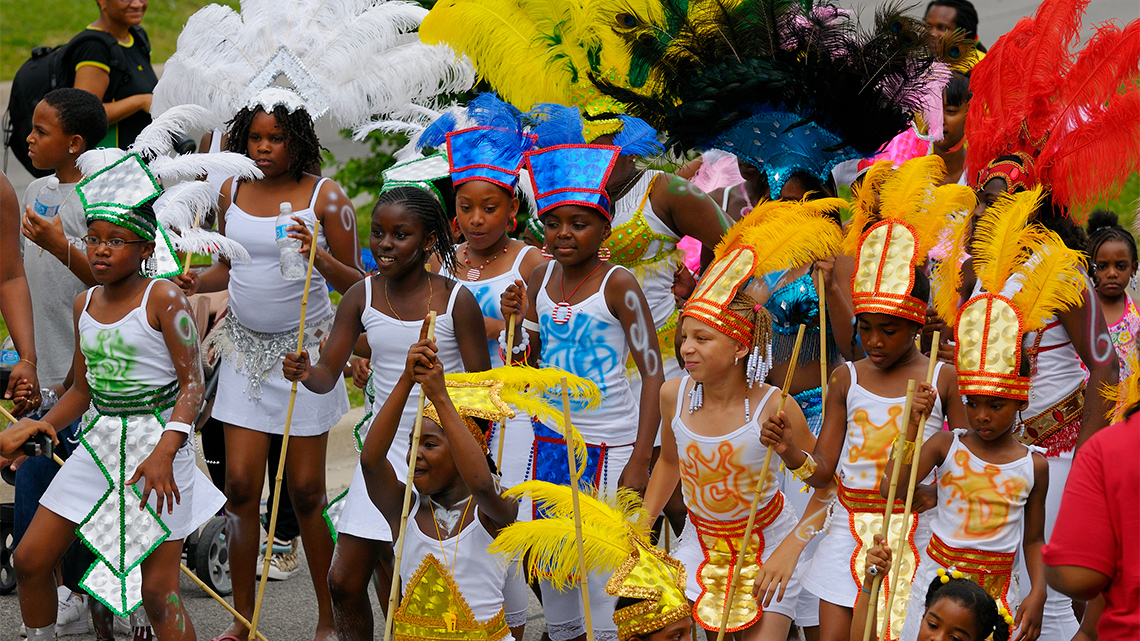Minds On
Today’s vocabulary
Press the following tabs to access the definitions for today’s vocabulary.
Important ideas in dance, which include the following:
- Body: The instrument of dance. The term body may also refer to the body’s position or shape (e.g., curved, straight, angular, twisted, symmetrical, asymmetrical); also, how the body is moving (e.g., using locomotor or non-locomotor movements).
- Energy: The force with which the body moves (e.g., light, strong, sustained, sudden).
- Relationship: The way in which two or more things are connected to or associated with one another (e.g., dancer to dancer, dancer to object, right arm to left arm).
- Space: The physical area in which the body moves; also, the area surrounding the body.
- Time: An element of dance involving rhythm, tempo, accent, and duration. Time can be based on measured beats, as in music, or on body rhythms, such as breath, emotions, and heartbeat.
Let’s get started!
The elements of dance can be used to communicate different ideas and messages to the audience.
We can use the Critical Analysis Process to help us learn more about dances we create and experience. Examine the following image with a diagram of the process.
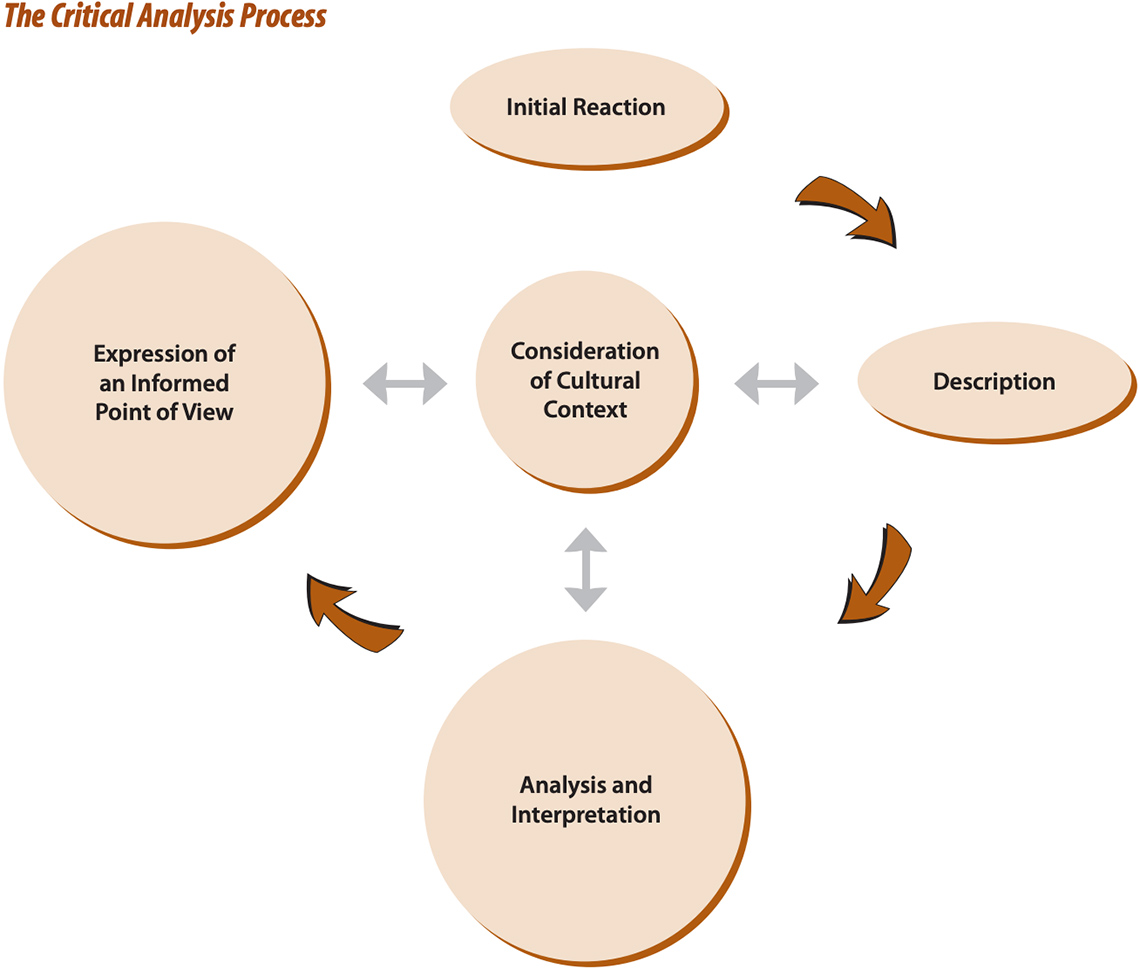
The critical analysis process begins with the initial reaction to a work, followed by a description of the work. Then, analysis and interpretation of the work takes place. The process ends with the expression of an informed point of view. It is important to note that the cultural context of the work is taken into consideration throughout the entire critical analysis process.
Use the Critical Analysis Process to explore the following dance video of Moko Jumbies (stilt dancers) at Carnival in Trinidad and Tobago.
Record your initial thoughts about the dance using the graphic organizer provided or using another method of your choice.

Teachers A and B saying: “Welcome to the Initial Reaction phase! This first impression is the starting point for further discovery. There are no right or wrong answers.”
Consider the following guiding questions when you examine the video:
- What is your first impression?
- What does this dance make you think about?
- What does this dance remind you of?
- How does this dance make you feel? What emotions does this dance suggest?
- What connections can you make between this dance and your own experience or other art forms?
Now, let’s examine the video.
Access the following video of a performance by the Massy All Stars Steelband at Carnival in Trinidad and Tobago to learn more about Moko Jumbies (stilt dancers) and record your initial reactions.
Portfolio
Portfolio
Complete the My Initial Thoughts Organizer in your notebook or using the following fillable and printable document to record your initial thoughts about the Moko Jumbie dance video. If you would like, you can use speech-to-text or audio recording tools to record your thoughts. Consider adding your work to your portfolio.
Use the following graphic organizer to record your initial thoughts about the video you examined.
| My Initial Thoughts | |
|---|---|
| I think… | I wonder… |
Press the ‘Activity’ button to access My Initial Thoughts Organizer.
Action
Get ready, get set…
Describing the dance
Revisit the Moko Jumbies dance video from the Minds On section and complete the activity that follows.
After examining the video, describe the dance using the elements of dance.
Press the ‘Elements of Dance’ button to access a reference guide with the elements of dance.
| Body |
What is the dancer’s body doing? Consider the following questions:
|
| Space |
Where is the dancer’s body moving? Consider the following questions:
|
| Time |
When is the dancer’s body moving? (In relation to time) Consider the following questions:
|
| Energy |
How is the dancer’s body moving? Consider the following questions:
|
| Relationship |
Who or what is the dancer’s body moving with? Consider the following questions:
|

Teachers A and B saying: “In the Description phase, list everything you notice in the dance clip. You may describe the costumes, images, elements of dance, etc.”
Consider the following guiding questions when describing the dance:
- What do you notice when you examine the dance?
- What grabs your attention in the dance?
- What do you notice about the elements of dance?
Record your ideas digitally, orally or in print, or in the following graphic organizer provided.
Portfolio
Portfolio
Use the following fillable and printable Description Phase Organizer to record your description of the dance. Respond to the guiding questions in the middle column titled “My thoughts and ideas.” You can also complete the activity in your notebook, or if you would like, you can use speech-to-text or audio recording tools to record your thoughts. Consider adding your work to your portfolio.
Note that for now, we are only recording our answers in the “My thoughts and ideas” column of the organizer. We will complete the “My research” column later in this learning activity.
| Critical Analysis Process: description phrase | My thoughts and ideas | My research |
|---|---|---|
| What do you notice when you examine the dance? | ||
| What grabs your attention in the dance? | ||
| What do you notice about the elements of dance? |
Press the ‘Activity’ button to access Description Phase Organizer.
Learning how to appreciate dances
Learning about diverse cultures helps develop each person’s cross-cultural understanding.

Cross-cultural understanding is the level of awareness and understanding that people from different cultural backgrounds can have for cultures outside of their own.
As we learn about different cultural traditions, such as dances, costumes, and cultural symbols, we also learn how to appreciate them and not appropriate them by mimicking or copying them in a negative way.

Cultural differences not only make people unique but give us the opportunity to learn about and understand different ideas and perspectives. This makes learning more interesting and our communities better!
Dance can be enjoyable and make us feel good, but it’s important to understand that it can also reflect what is happening in the lives and world of the people who create it. It can use different symbols (e.g., choreography, gesture, characters, etc.) to communicate meaning. These symbols can be connected to people and where they live, their cultural values and beliefs, and can also reflect their histories and important historical events. For this reason, these symbols have special meanings and significances to the cultures and communities from which they are from and may also change over time based on the changes the community experiences.
Check your understanding!
Let’s take a moment to review our learning. Determine whether the following four statements are true or false. For each statement, select the correct answer, then press the ‘Check Answer’ button to find out how you did.
Go!
Where did the dance come from?
Let’s check out the following conversation to find out more about this section.

Teacher A: “Learning about what was happening in a culture or community at the time a dance piece was created can help us understand what the dance means.”
Teacher B: “It can also help us understand what it represents to that culture or community today!”
Teacher A: “With this in mind, let’s explore Carnival and its roots.”
Use the information and guiding questions in this section to gather background information about Carnival and learn about Moko Jumbies and dance.
This section consists of the following four parts:
- Part 1: Toronto Caribbean Carnival
- Part 2: Expression through dance
- Part 3: Expression through costumes
- Part 4: Expression through characters
Completing the “Description Phase Organizer”
After you have explored every part of this section, record your findings in the “My research” column (last column) of the “Description Phase Organizer” you have previously worked on in the “Describing the dance” section. You can also use another method of your choice to record your findings. Consider adding your work to your portfolio.
Student Tips
Take some time

As this section does have 4 parts, you may need to take some time to work through each part and to grasp the information.
Part 1: Toronto Caribbean Carnival
Influenced mostly by Trinidad and Tobago’s annual Carnival, the Toronto Caribbean Carnival has become an important celebration in Canada. It takes place on the first Saturday of August to celebrate and remember the end of slavery throughout the British Empire. The festival is respected as a symbol of freedom and freedom of expression.
The parade, or Grand Parade, is considered the highlight of the festival. Participants as well as people attending the parade dress up in costume. The event is a display of different colours and sounds. The participants are organized into masquerade or mas “bands”, which follow a theme and are often joined by live music groups. The tradition of “playing mas” can help us understand the (historical) significance of the celebration.

Carnival “bands” are groups of people in a Carnival wearing costumes based on a specific theme. The size of the bands may vary, they can include as many as 3,000 people.
In the beginning, Carnival in Trinidad was exclusively for the white upper class. It was celebrated through house parties, street parades, and masquerade balls. People of colour and Africans who were enslaved were not allowed to participate in Carnival celebrations except when they were performing. After slavery ended (in the British Empire), the Africans that were enslaved would act out Carnival to celebrate their freedom. This was included in the way they danced, the colourful and elaborate costumes they wore, and the characters they played.
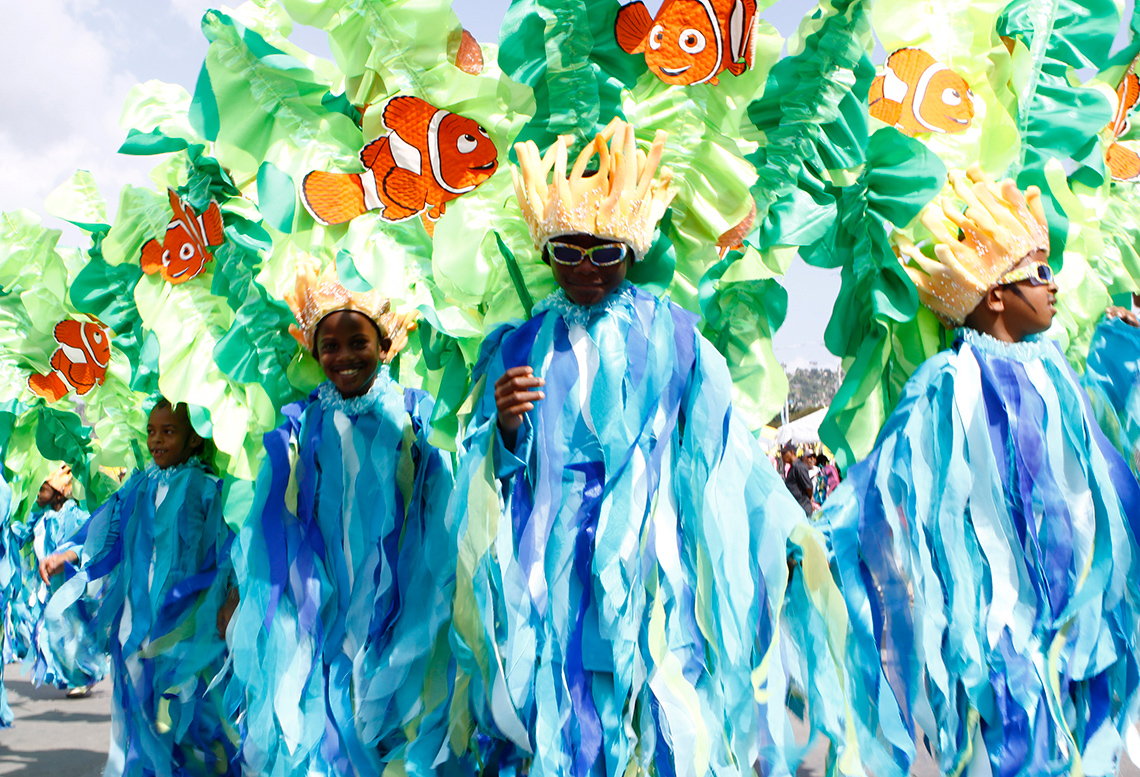
By learning about the history of Carnival, people today can understand the importance of this event as an act of resistance against oppression and colonization for Black and racialized people.
Part 2: Expression through dance
Dance is one of the ways the Carnival-goers are encouraged to express themselves freely. Examples of the movements include ‘chipping,’ the ‘jump and wave,’ and ‘hip winding.’
Check out the following images to examine these movements.
Explore how these movements are performed in the next TVOkids video entitled “Junior Carnival” and respond to the following questions:
- What do you notice when you examine the dance movements?
- What grabs your attention?
- What do you notice about the elements of dance?
Record your responses using a method of your choice.
Part 3: Expression through costumes
Explore the following images of Carnival costumes and consider the following questions:
- What do you notice about the costumes?
- How would you describe the costumes? (e.g., materials, colours, size, etc.)
Many participants will wear detailed costumes with bright colours, sequins, and feathers. Each band is led by a “king” and “queen” who wear big costumes. The costumes can be so big and heavy they often require wheels so the masquerader can move through the streets.
Part 4: Expression through characters
The costumes can represent traditional Carnival characters and they play an important role within Carnival. Often, dancers will learn about the traditions connected with a specific character and will play the same character year after year. Some of the characters include Moko Jumbie, Dame Lorraine, and Sailors.
Press the following tabs to learn more about these Carnival characters.
Explore the following image of the character Moko Jumbie. What do you notice?
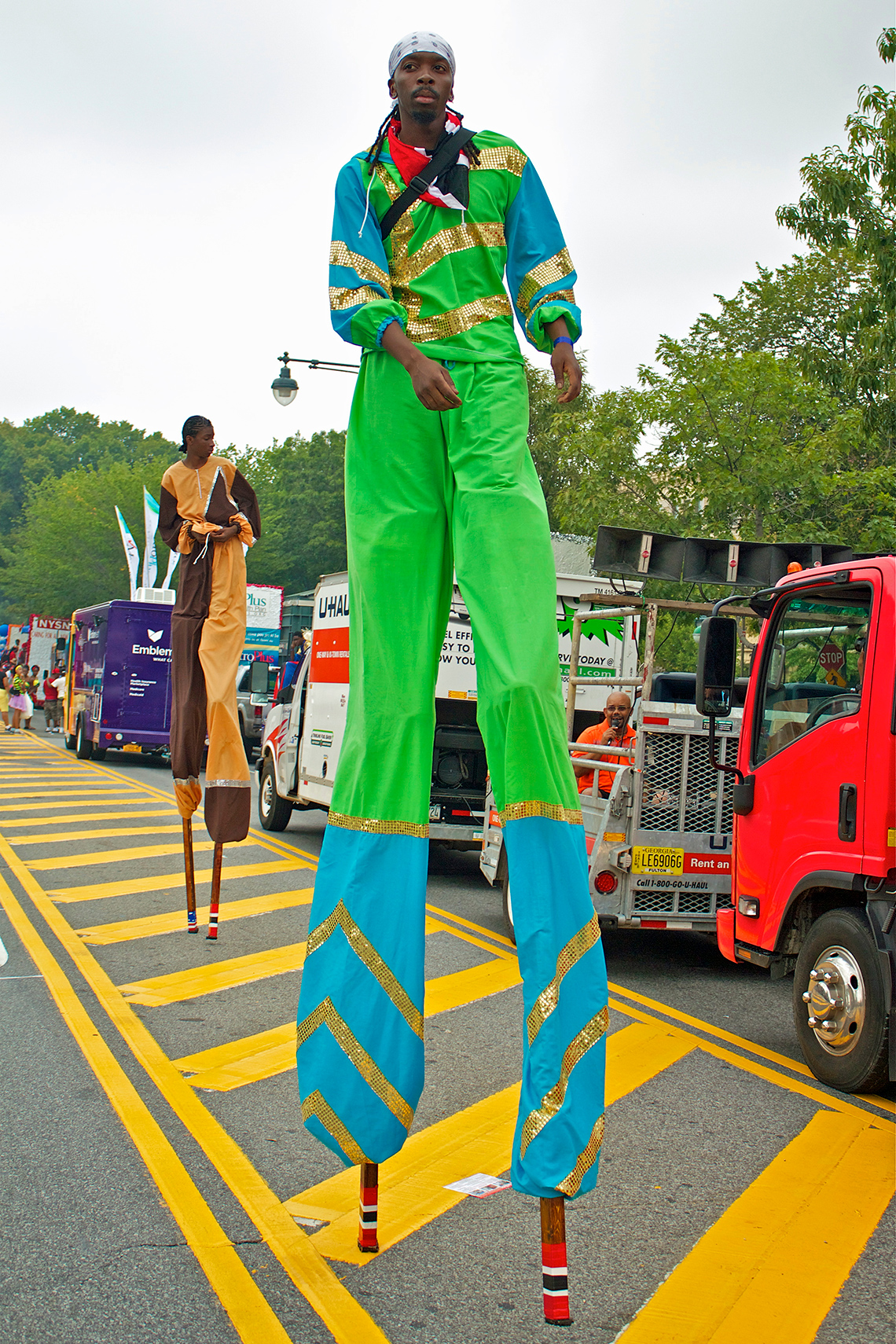
The character of Moko Jumbie originated in West African cultural traditions that were brought to the Caribbean. The character is named after a West African spirit that protects villages. At Carnival, dancers celebrate and honour the spirit by dancing on stilts that can be more than three metre sticks tall! The costume is often brightly coloured and includes pants, a jacket, and a hat.
What else would you like to know about this character? Record your thoughts using a method of your choice.
Check out another Carnival character. Explore the following image of the character Dame Lorraine. What do you notice?
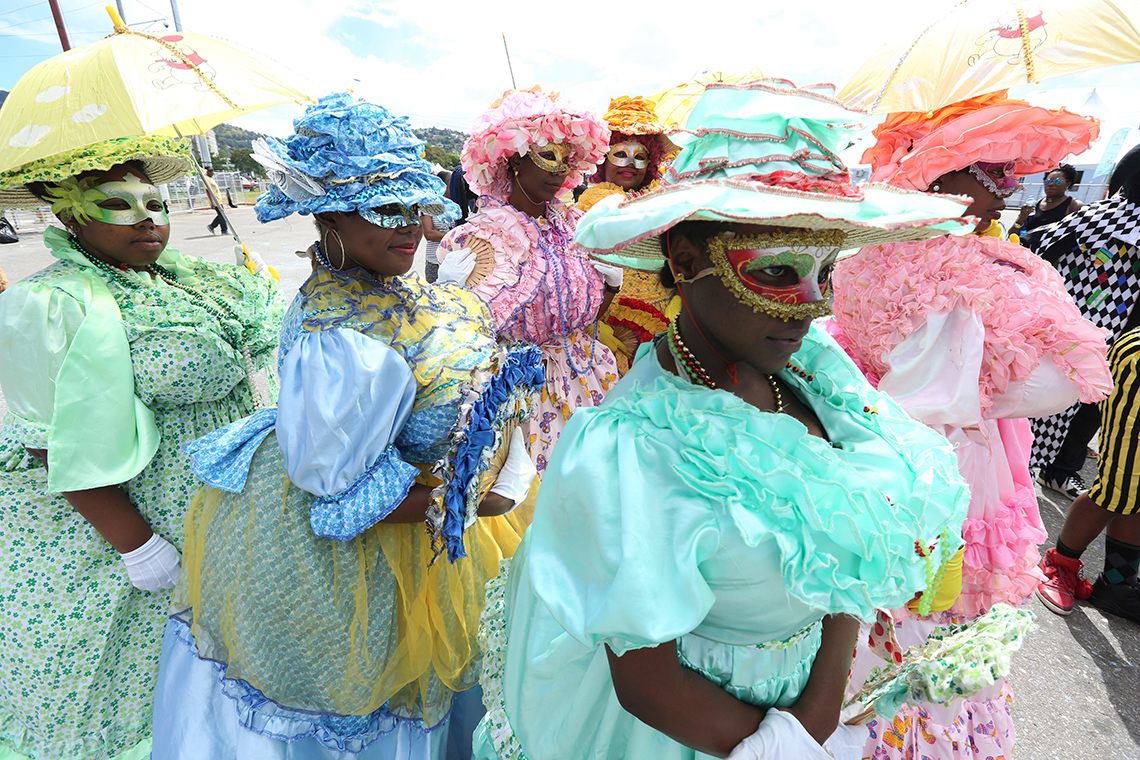
Dame Lorraine is a traditional female character dressed in a fancy ball gown. This character imitates the 18th and early 19th century French upper class.
What else would you like to know about this character? Record your thoughts using a method of your choice.
Examine one more Carnival character. Explore the following image of the sailor character. What do you notice?
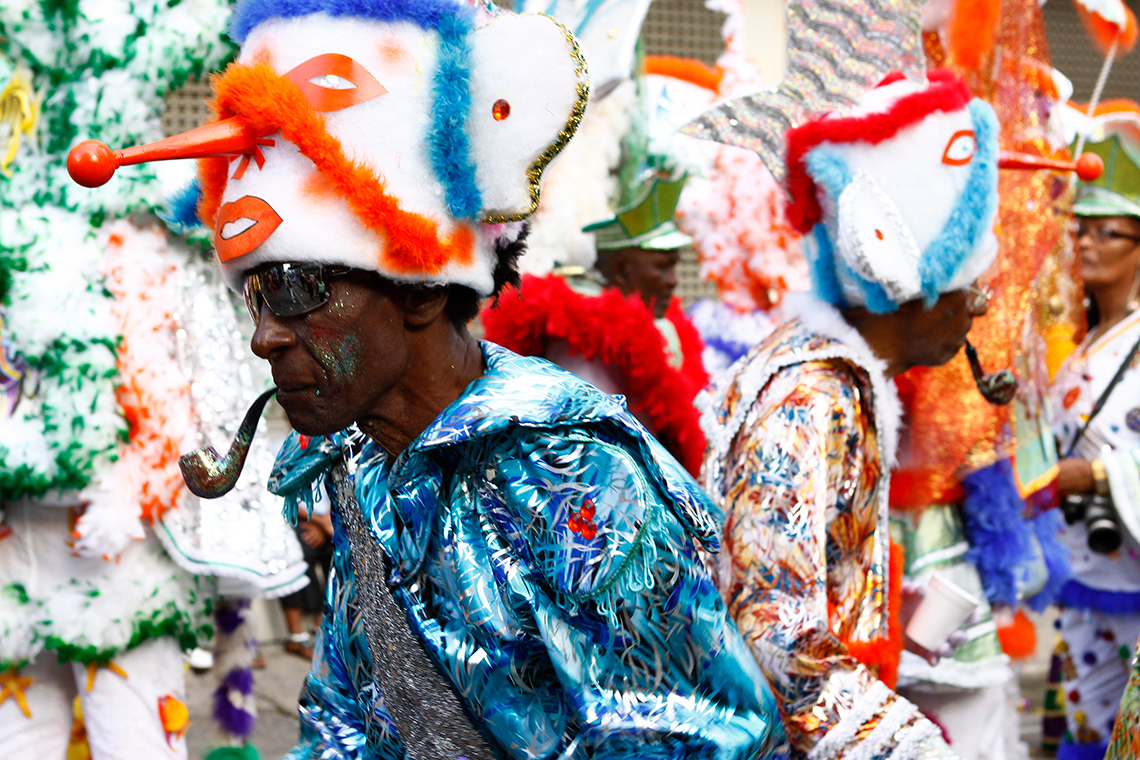
The traditional sailor character was introduced to Carnival in the 1880s. Dancers dressed in sailor costumes like the sailors on the British, French, and American military ships that came to Trinidad in the 1800s. There are different styles of the sailor costume or mas at Carnival. There are also several dances connected to the sailor mas.
What else would you like to know about this character? Record your thoughts using a method of your choice.
Consolidation
Putting it all together

Imagined interview
Having information about the dances, the people, the themes, and the symbols can affect our understanding of a dance piece and how it fits with a community’s past.
Now that you have gathered some background information on Carnival and Moko Jumbie, imagine you are a student journalist who has been asked to report on the Toronto Caribbean Carnival.
Portfolio
Review your learning

Come up with a list of questions you might ask a community member at Carnival. This might be a costume maker, performer, or participant at the parade.
What questions could you ask to help your peers learn about the Moko Jumbie dance and why it is important to the lives of the people who created it and perform it?
Record your interview questions digitally, orally, or in writing.
Consider adding your work to your portfolio.
Interview question pointers:
The purpose of an interview is to gather information about a topic or event. You may use the 5W's and H strategy to come up with questions: Who? What? Where? When? Why? How?.
Use these question words to ask questions that are answered with more than a simple yes or no. For example: Why is it important to learn about what the Moko Jumbie dance means? Why was it created?
Reflection
As you read through these descriptions, which sentence best describes how you are feeling about your understanding of this learning activity? Press the button that is beside this sentence.
I feel…
Now, record your ideas using a voice recorder, speech-to-text, or writing tool.
